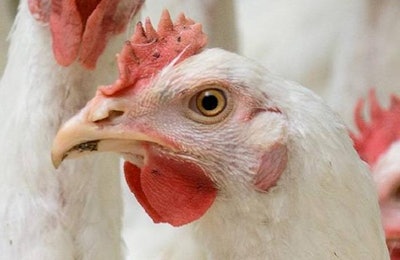
As part of its newly launched Broiler Revitalization Project, Ghana’s Ministry of Food and Agriculture will distribute 20 million day-old chicks to selected poultry farmers nationwide.
This year, 2020, sees the start of the initiative, said Director of Veterinary Services at the Ministry of Food and Agriculture Dr. Asiedu Baah. He announced the development at a recent meeting of the Greater Accra Poultry Farmers Association (GAPFA), reported Daily Guide Network.
Baah described the new project as a “game-changer” for the Ghanaian poultry sector.
On behalf of the Association, its president Michael Ampem welcomed the government announcement. He added that poultry farmers across the country will participate in the scheme, including those in six selected districts of Greater Accra.
According to Daily Guide, Ghana’s current capacity for broiler production is around 4.4 million birds. To meet demand, the country imported 135,000 metric tons (mt) of frozen poultry meat from the European Union in 2017. This is equivalent to around 112 million birds, and was 76% more than in the previous year.
Expensive feed, cheap imports: Ghana’s poultry challenges
Already in 2010, the country’s poultry producers were calling for a reduction in poultry meat imports.
Since that time, according to GAPFA, Ghana has become almost entirely reliant on this trade. For some time, the Association has been calling for support to achieve a self-sufficiency rate of around 50%.
The country produced almost 47,400 metric tons (mt) of chicken in 2013, according to FAOstat, the statistics arm of the United Nations’ Food and Agriculture Organization (FAO). This is the most recent year for which it has published production figures.
According to the same source, Ghana imported a total of 147,538 mt in 2017, worth almost US$120 million. Over the previous five years, this trade had fluctuated widely from more than 168,000 mt in 2013 to around 93,000 mt in 2016.
Expansion in Ghana’s poultry sector will drive an increase in feed production, according to Ampem. He said GAPFA currently produces 27,000 mt of poultry diets per year.
Government aims for self-sufficiency in meat production
At the end of 2019, Ghana’s President Nana Addo Dankwa Akufo-Addo launched the Rearing for Food and Jobs (RFJ) Initiative.
According to the Ministry of Food and Agriculture, Ghana’s poultry meat demand amounts to 400,000mt per year. While domestic production stands at around 57,870 mt, about 180,000 mt of poultry meat is imported into the country. Total meat imports — 240,000 mt — cost the country more than US$375 million annually.
The RFJ initiative aims to modernize and transform Ghana’s agriculture by reducing food imports, creating jobs, and easing foreign exchange pressures. These can be achieved by boosting the rearing of poultry and other livestock.
For the poultry sector, the output target for 2020 is 40,000 mt, with scaling up occurring over subsequent years. To attract farmers back into poultry production, the national government will offer a subsidy for the period of time. Specifically, the agriculture ministry will subsidize by 50% the costs of 1,000-2,000 day-old chicks, vaccines, and feed for the first two weeks of production.
Training in poultry management will be offered to young people, women and selected farmers. Furthermore, the government has offered support in the form of a processing plant, as well as refrigerated vans and mobile slaughter units, each with a capacity of 300 birds per hour.
















